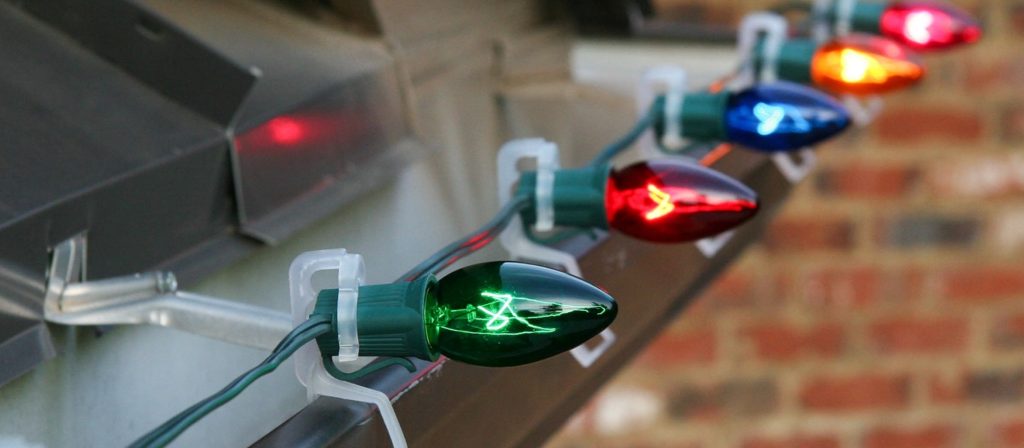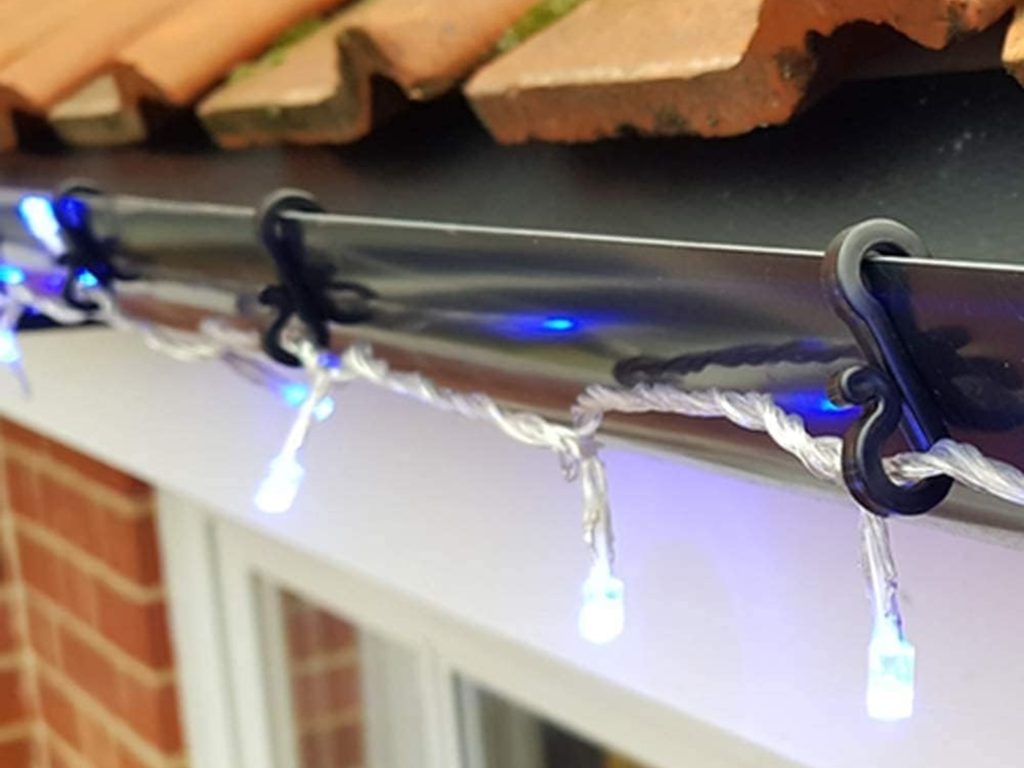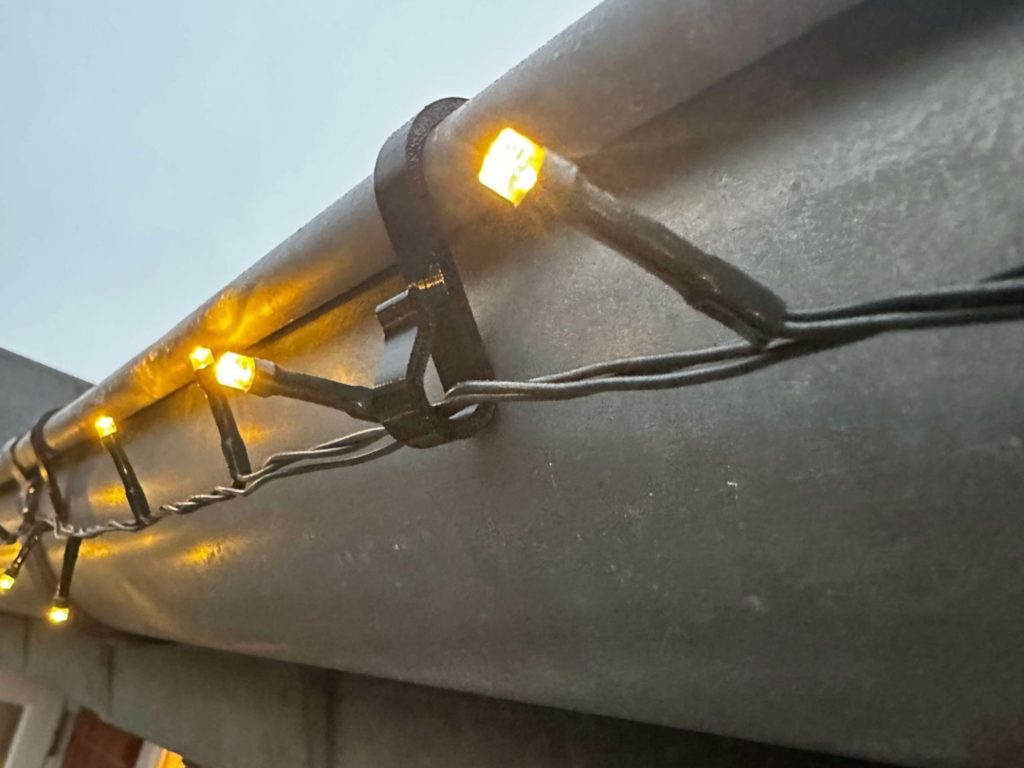An Easy Guide to Hanging Outdoor String Lights on Gutters
The Luminous Charm of Outdoor String Lights
In the realm of landscape lighting, outdoor string lights have emerged as an enchanting way to transform any exterior space into a nocturnal wonderland. Not only do they provide functional lighting, creating visibility and safety in darkness, but they also infuse the ambiance with a magical glow that can enhance any occasion. Whether for a backyard barbecue, a festive gathering, or simply to create an idyllic nighttime retreat for relaxation, these twinkling lights have become an essential decorative component of many homes.
What makes landscape string lights particularly appealing is their versatility. Available in various shapes, sizes, and colors, they can be tailored to match the theme or mood of your outdoor setting. From delicate fairy lights that lend a whimsical touch to robust Edison bulbs that exude vintage charm – there’s an option for every taste and style.
Beyond aesthetics, though, outdoor string lights also contribute towards improving home security. The lighting they provide deters potential intruders by eliminating dark areas where someone could hide undetected. Moreover, well-lit exteriors increase visibility for residents when navigating outdoors at night, thereby reducing the risk of accidents.
Lighting Up Your Gutters: A Practical Guide
Moving from the broad benefits to more specific applications – the focus here is on how to utilize your gutters as effective platforms for hanging these radiant gems. Gutters may not initially strike you as the most obvious or appealing place for this purpose; however, with careful planning and execution, they can function as sturdy bases while keeping your walls free from unsightly nail holes or adhesive marks.

Hanging string lights on gutters allows them to be displayed at height – something that gives them increased visibility while also creating lovely cascades of light along your home’s exterior. This positioning also allows light to spill over, creating soft pools of illumination that can highlight the architecture of the building and any surrounding landscape features.
This post will serve as a comprehensive guide, offering insights into necessary materials, preparation steps, safety precautions, troubleshooting tips, and maintenance advice. So whether you’re striving for a festive adornment during the holiday season or wish to create a harmonious ambiance during balmy summer nights – the art of hanging string lights on gutters can be yours to master.
Necessary Materials and Tools
The Ideal Selection of Outdoor String Lights
In any successful installation of outdoor string lights, the first critical factor is the choice of lights. Landscape string lights come in various types, but the most recommended for use are either LED or solar-powered lights. Both types offer significant benefits suited to diverse needs.
LED string lights are ideal for their energy efficiency and longevity. They provide a bright, warm glow that can elevate even the most mundane landscape into an enchanting setting. Landscape lighting with LED string lights also ensures sustainability as they consume less energy compared to traditional bulbs while delivering superior performance.
Solar-powered string lights, on the contrary, offer an environmentally friendly lighting solution that requires no electricity. Their self-sustaining nature makes them suitable for areas with abundant sunlight throughout the day. They turn on automatically at dusk and turn off at dawn, providing efficient and hassle-free landscape lighting.
Essential Tools for Hanging Lights
After selecting your preferred type of outdoor string light, it’s crucial to gather all necessary tools required for a smooth installation process.
A sturdy ladder is paramount to reach your gutters safely without strain or risk of falling. Ensure your ladder is stable and reliable enough to bear your weight as you work.
For attaching the landscape string lights onto gutters, gutter hooks or clips will be indispensable tools in this operation. They provide a secure grip that ensures your installed lights will remain steadfastly hung against weather elements like wind or rain.
You’ll also need a measuring tape handy to measure out your gutter’s length accurately before hanging your landscape lighting, allowing you to estimate how many strings of light you’ll need accurately.
Safety Equipment Recommendations
Safety should always be a top priority in every DIY project, such as hanging outdoor string lights on gutters. The recommended safety equipment includes gloves and safety glasses.
Wearing gloves will protect your hands from any sharp edges on the gutters or any abrasions that may occur during the process. They also provide an extra grip, helping you hold onto tools and lights more securely.
Safety glasses, on the other hand, offer protection against potential eye hazards. When looking up and attaching lights, small debris might fall off from the gutters. Safety glasses shield your eyes from such possible threats, ensuring you complete the project without harm.
Gathering all these necessary materials and tools in advance will make the installation process of your outdoor string lights more efficient and safe. With everything ready at hand, you are now prepared to illuminate your home’s exterior with a mesmerizing display of landscape lighting.
Preparations Before Hanging Lights: A Lighting Prelude
Checking the Condition of the String Lights: A Bright Start
To guarantee optimal landscape string lighting, it’s indispensable to verify the condition of your string lights before initiation. Start by unrolling your landscape string lights and laying them out on a flat surface. Ensure that no bulbs are missing or broken, as these could potentially pose safety hazards.
Next, you’ll want to check for any damaged wires. Look closely for any cuts or nicks in the insulation, which could expose the inner conductors. Mishaps like these can cause shorts when powered up and may even result in a fire hazard. If you discover broken bulbs, don’t fret.
Many string lights come with spare bulbs included for just such eventualities. If not, replacements can usually be found at most home improvement stores or online marketplaces. Damaged wiring is a more serious issue that might require repair or replacement depending on severity.
In some cases, electrical tape may suffice to cover minor nicks in the insulation, but consult an electrician if you’re unsure or if damage is extensive. Make sure to plug in your string lights into a power source to give them a quick test run as well; this will allow you to identify any non-functioning sections ahead of time so they can be fixed or replaced before hanging.
Measuring and Planning: Plotting Your Twinkling Tapestry
Precise preparation paves the way for flawless execution when it comes to decorating your exteriors with landscape string lights. Begin by measuring your gutters’ length where you plan on hanging your lights using a retractable measuring tape.
Here’s an insider tip – always measure twice! This will ensure accuracy and prevent mishaps like running out of lights halfway through installation due to miscalculations. The last thing anyone wants is their landscape lighting project turning into a frustrating game of connect-the-dots! Once you’ve obtained your measurements, it’s time to plan your layout.

Consider any aesthetic preferences you might have in terms of design and lighting effect. Do you want your lights to hang in a straight line or drape in a swooping pattern? Maybe you desire the soft glow of romantic fairy lights, or perhaps the bold charm of colorful festoon bulbs? Use these considerations to guide your purchasing decision when it comes to selecting the right type of string lights.
Take note of light spacing as well – closer bulbs provide brighter light and vice versa. Remember too that not all landscape lighting needs to be grandiose or complex. Sometimes simplicity emanates its own unique beauty. Your planning phase should be appropriately steered by personal style, practicality, safety, and comfort, laying out an exquisite blueprint for illuminating artistry with landscape string lights.
Step-by-Step Guide to Hanging String Lights on Gutters: Lighting Your Exterior with Elegance
Ladder Safety 101: Ascending with Assurance
Safety, in any endeavor, is of paramount importance, and perching precariously atop a ladder is no exception. Prior to even considering the act of stringing lights, one must first ensure the stability of their chosen ladder. The ground upon which it rests should be level and solid; if not, secure the base properly to prevent any unexpected shifts or slides.
The positioning of the ladder also warrants careful attention. It should lean against your home at an appropriate angle – generally a 75-degree angle is optimal for stability – to avoid toppling over backwards or sliding down forwards.
Furthermore, resist overreaching while working on a ladder, as this could lead to an imbalance and potential fall risk. Instead, descend and move the ladder accordingly to stay safe while hanging your landscape lighting.
Securing Hooks and Clips: Anchoring Your Ambiance
With safety precautions in place, you can begin attaching gutter hooks or clips – bearers of your gleaming strands of landscape string lights. The hook end will latch onto the edge of your gutter while the other end serves as a holder for your string lights.
Space these hooks at regular intervals along your gutter – usually about every 12 inches – providing ample support for the weight of your lights. This uniform placement will also create an organized appearance that enhances aesthetic appeal. Once attached securely, give each hook a gentle tug to ensure they are firmly fastened before moving on to hanging lights.
Hanging String Lights: Weaving Your Web of Wonder
As you hang each section of string light onto its corresponding hook or clip, ensure that they hang neatly and securely without being overly tight. Establishing a slight droop between each hook can create an appealing, cascading effect that adds a touch of elegance to your landscape lighting.
Be careful not to pull or yank the strands as you hang them. Instead, treat them with the delicacy they deserve for being such an important part of your home’s exterior charm.
Spacing Between Bulbs: A Symphony in Symmetry
Mind the spacing between each bulb as you hang your strings. Properly spaced bulbs ensure a uniform lighting effect that’s pleasing to the eye.
In general, aim for about 8-10 inches of space between each bulb, but don’t hesitate to adjust this based on personal preference and light intensity needed. Consider this process as orchestrating a symphony where every bulb plays in harmony with the others – creating a radiant concert of light.
Hanging outdoor string lights on gutters involves more than just mounting and securing. It’s an art that requires meticulous planning and execution – with safety always at its core – all aiming at creating a beautifully lit landscape that enhances your home’s appeal night after night.
Powering Your Outdoor String Lights: A Glowing Spectrum of Options
Exploring Different Power Options: Solar-Powered vs Electric-Grid
When it comes to fueling your landscape string lights, there are two primary options you can consider: solar-powered and electric-grid. Each comes with its own attributes and drawbacks, which we shall delve into for a comprehensive understanding.
Solar-powered lights, as the name suggests, utilize the energy from the Sun to illuminate your outdoor space. These landscape lighting fixtures come equipped with solar panels that convert sunlight into electricity during the day. This electricity is stored in batteries and used to power the lights once darkness falls.
An inherent advantage of this option is that it’s environmentally friendly and will save on energy costs in the long run. However, they require ample sunlight exposure during daytime hours for optimal operation and may not be suitable for areas with less sunshine or during winter months.
Electric-grid string lights, on the other hand, connect directly to an electrical outlet for their power supply. Robust and consistent, they offer bright illumination regardless of weather conditions or daylight exposure – a feature especially useful in regions experiencing less sunny days or extended periods of cloud cover.
The downside? They may increase your energy bill somewhat depending on use and require a nearby outdoor-rated electrical outlet.
Safety Measures when Dealing with Electricity Outdoors
Handling electricity outdoors mandates adherence to certain safety measures to avoid potential hazards. Regardless if you’re installing solar landscape lighting or electric-grid options, these precautions should never be overlooked.
Firstly, ensure all lighting fixtures are rated for outdoor use. This means they’ve been specifically crafted to withstand weather elements such as rain and snow without posing an electrocution risk.
For those using electric-grid string lights, always use outdoor-rated extension cords when needed and make sure all plugs are off-ground level by at least two feet to prevent water infiltration. Insert plugs into a weatherproof outlet cover to keep them dry and secure.

Regularly inspect your lighting system for any signs of wear and tear. Keep an eye out for frayed wires or broken bulbs, which can pose a safety risk. Immediately replace any damaged parts to ensure the integrity of your landscape string lights.
Consider using a ground fault circuit interrupter (GFCI) outlet for electric lights. This is a device that shuts off an electric power circuit when it detects current flowing along an unintended path, such as through water or a person, significantly reducing the risk of shock.
No matter how tempting it might be to rush through the process, safety should always be paramount when dealing with electricity outdoors, especially in the context of landscape lighting.
Troubleshooting Common Issues
Addressing Common Problems: Loose Bulbs and Non-Working Sections
Despite the ease and simplicity of installing landscape string lights along your gutters, various issues can crop up – loose bulbs and non-working sections being two of the most common. These problems can hinder the functionality and aesthetic appeal of your landscape lighting.
Loose bulbs are an issue that can be particularly exasperating. The vibrancy of your luminous display may be compromised by a single dangling light or an entire section hanging limply. On a practical level, loose bulbs could potentially cause more serious issues such as short-circuiting, which might lead to additional sections becoming nonfunctional.
Non-working sections are another vexing problem you may encounter when dealing with outdoor string lights. This usually stems from one faulty bulb hindering the electrical flow to subsequent bulbs in the setup, thereby rendering an entire portion of your gutter lighting ineffective.
Providing Solutions: Tightening Bulb Connections and Replacing Fuses
Thankfully, these common problems have straightforward solutions that require little more than some patience and meticulousness. For loose bulbs, it is often a simple matter of tightening their connections. Start at one end of the string lights setup and work systematically through each bulb socket in turn, ensuring they are securely connected to their individual fixtures.
In instances where tightening does not rectify the problem, it’s possible that there’s a more internal issue at play – possibly with the fuse embedded within the plug mechanism itself. In this case, replacement fuses are commonly included with most sets of new landscape string lights; if not included with yours or if you’ve misplaced them over time, replacements can easily be found at most hardware stores.
When dealing with non-working sections in your landscape lighting system, first identify where exactly this section begins by locating any conspicuous gaps in your string light display. Once identified, isolate the faulty bulb or bulbs through a process of elimination – replace them one by one with a known working bulb until the issue is resolved.
It’s worth noting that while these steps may appear somewhat tedious, they’re fundamental to maintaining an effective and admirable landscape lighting setup. Inevitably, addressing these minor issues promptly will extend the longevity of your outdoor string lights and enhance the charm of your home exterior during those balmy summer evenings or festive winter nights.
Maintenance and Care Tips
Caring for your Landscape Lighting
The longevity of your landscape string lights is dependent on regular maintenance and care. To begin with, always ensure the lights are disconnected from the power source before conducting any maintenance tasks. It’s a prudent approach that provides safety and convenience when handling the light bulbs.
Regular Cleaning
Over time, dirt, grime, and debris can accumulate on your string lights, causing them to dim or even malfunction. Regular cleaning is thus essential for maintaining their shine. Use a clean, damp cloth to gently wipe each bulb without applying too much pressure, which could lead to breakage.
Protection Against Harsh Weather Conditions
While most outdoor string lights are designed to withstand different weather conditions, providing additional protection during extreme weather can increase their lifespan. Consider taking them down during heavy storms or use weatherproof covers as a shield against elements like snow or strong wind.
Checking for Damages
Frequent checks for any visible damages, such as cracked bulbs or frayed wires, are also vital in maintaining the functionality of your landscape lighting. Should you encounter any damages, prompt replacements should be done to prevent further deterioration, which could potentially lead to electrical issues.
Conclusion: How to Hang Outdoor String Lights on Gutters?
Installing landscape string lights adds an enchanting allure to your home while providing functional lighting solutions as well. However, it is crucial that these seemingly simplistic steps are carefully followed not only for aesthetic purposes but also for safety considerations. With adequate care and maintenance practices in place, you can enjoy an extended lifespan of your landscape lighting while maintaining its captivating glow throughout numerous seasons.
The beauty of your exterior space isn’t only appreciated in daylight; with these gleaming nighttime adornments referred to as outdoor string lights, every evening becomes an occasion worth celebrating under a canopy of glowing embers.
You may also be interested in the following posts:
